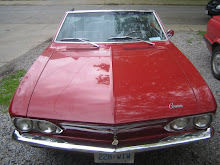

 Shea's was demolished in 1956 to make room for the new City Hall.
Shea's was demolished in 1956 to make room for the new City Hall.From Heritage Toronto:
Shea's Hippodrome was one of the greatest vaudeville theatres ever built in Canada. It was the brainchild of Ontario-born Jerry and Michael Shea, famous theatre owners and builders who moved to Buffalo, New York and gained notoriety for designing spectacular theatres. In Toronto, prior to Shea's Hippodrome, they built Shea's Yonge Street and Shea's Victoria. The new Shea's would eclipse them both. Interestingly, the term Hippodrome, the Greek word for a horse racing stadium, eventually came to be used for large entertainment venues around the world. Located north of Queen Street, on Terauley Street (today Bay Street), Shea's Hippodrome was designed by Rochester New York firm L H. Lempert featuring a grand exterior with glass and copper domes that were illuminated at night. The front façade was finished in a decorative white brick design topped with the words Shea's Hippodrome that could be seen from a distance. In the centre of the façade was a copper marquee that advertised the acts for the night. When Shea's Hippodrome opened in April of 1914, it became not only the largest theatre in Canada but also one of the largest vaudeville theatres worldwide. In fact, the "Hipp" as it was known, was considered one of the big four vaudeville theatres in North America. As such, it featured some of the world's greatest acts including Etobicoke's very own O'Connor Sisters who once remarked that Shea's Hippodrome was their favoured theatre in the country. American actor Red Skelton who became a world famous comedian appeared at Shea's in the mid 1930's and once remarked "I really got started in a big way when I went to Shea's in Toronto." Inside was an elaborate auditorium with seats for some 3200 people. There were 12 grand opera boxes, an orchestra pit, decorative plaster mouldings on the ceiling and walls, and hundreds of lights that illuminated the space. Although initially built as a vaudeville theatre, Shea's, like many of its contemporaries, had to adapt to rapidly developing technologies in film including sound and technicolour. In addition to musical acts, theatre, acting, song and dance, Shea's featured films such as The Ten Commandments. Shea's Hippodrome was demolished in the late 1950's to make way for the development of New City Hall.






It's wonderful to imagine what it would have been like if more of these movie palaces had survived to the present day, but it's hard to ignore the fact that the few that have are rarely used as theatres any more. (The Eglinton's an "event space," the old Pantages is whatever corporate sponsor wants it to be called as a live theatre, as is the Elgin, and the Winter Garden, while beautifully restored, is rarely open to the public these days.) I suppose it would be nice if they were still there, but the brute economics of the entertainment industry mean that a cavernous movie palace can't cover its running expenses any more, and probably never will. Then again, we lost a lot of these theatres years ago, during periods when movie attendance was still sold, so something else was obviously going on.
ReplyDelete